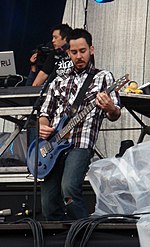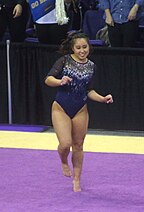「ハーフ (混血)」の版間の差分
ひいらぎティータイム (会話 | 投稿記録) 編集の要約なし タグ: モバイル編集 モバイルウェブ編集 |
|||
| 26行目: | 26行目: | ||
ハーフとは、日本人の親と日本人ではない親から出生した子のことを指す。用語民族としての[[日本人]]は先住民とともに[[日本列島]]で何世紀にもわたって暮らし、[[アイヌ]]や[[琉球民族]]などの少数民族は、ほとんどが[[大和民族]]に同化していった。したがって混血カップル、ハーフは[[日本の歴史|封建的な日本]]では極稀であった。日本人と他の東アジアおよび東南アジアの人々の間には、アジアのカップルが混在していた。 |
ハーフとは、日本人の親と日本人ではない親から出生した子のことを指す。用語民族としての[[日本人]]は先住民とともに[[日本列島]]で何世紀にもわたって暮らし、[[アイヌ]]や[[琉球民族]]などの少数民族は、ほとんどが[[大和民族]]に同化していった。したがって混血カップル、ハーフは[[日本の歴史|封建的な日本]]では極稀であった。日本人と他の東アジアおよび東南アジアの人々の間には、アジアのカップルが混在していた。 |
||
最も著名な理論は、現代の[[大和民族|大和日本人]]は先住民族の[[縄文人]]と大陸移民の[[弥生人]]の両方の子孫であるというものである <ref name="Kiriyama17">{{Cite journal|last=Hideaki Kanzawa-Kiriyama|last2=Kirill Kryukov|last3=Timothy A Jinam|last4=Kazuyoshi Hosomichi|last5=Aiko Saso|last6=Gen Suwa|last7=Shintaroh Ueda|last8=Minoru Yoneda|last9=Atsushi Tajima|date=February 2017|title=A partial nuclear genome of the Jomons who lived 3000 years ago in Fukushima, Japan|journal=[[Journal of Human Genetics]]|volume=62|issue=2|pages=213–221| |
最も著名な理論は、現代の[[大和民族|大和日本人]]は先住民族の[[縄文人]]と大陸移民の[[弥生人]]の両方の子孫であるというものである <ref name="Kiriyama17">{{Cite journal|last=Hideaki Kanzawa-Kiriyama|last2=Kirill Kryukov|last3=Timothy A Jinam|last4=Kazuyoshi Hosomichi|last5=Aiko Saso|last6=Gen Suwa|last7=Shintaroh Ueda|last8=Minoru Yoneda|last9=Atsushi Tajima|date=February 2017|title=A partial nuclear genome of the Jomons who lived 3000 years ago in Fukushima, Japan|journal=[[Journal of Human Genetics]]|volume=62|issue=2|pages=213–221|doi=10.1038/jhg.2016.110|pmid=27581845|pmc=5285490}}</ref>。弥生は、 [[東アジア]](主に[[中華人民共和国|中国]]と[[朝鮮半島]])からの移民の混血(1,000 BCE〜300 CE)であった。 |
||
現代本土(大和)日本人の縄文人のゲノムは20パーセント未満とされ<ref>{{Cite journal|last=Kanzawa-Kiriyama|first=H.|last2=Kryukov|first2=K.|last3=Jinam|first3=T. A.|last4=Hosomichi|first4=K.|last5=Saso|first5=A.|last6=Suwa|first6=G.|last7=Ueda|first7=S.|last8=Yoneda|first8=M.|last9=Tajima|first9=A.|date=2016-06-01|title=A partial nuclear genome of the Jomons who lived 3000 years ago in Fukushima, Japan|journal=Journal of Human Genetics|volume=62|issue=2|pages=213–221|publisher=National Center for Biotechnology Information, U.S. National Library of Medicine| |
現代本土(大和)日本人の縄文人のゲノムは20パーセント未満とされ<ref>{{Cite journal|last=Kanzawa-Kiriyama|first=H.|last2=Kryukov|first2=K.|last3=Jinam|first3=T. A.|last4=Hosomichi|first4=K.|last5=Saso|first5=A.|last6=Suwa|first6=G.|last7=Ueda|first7=S.|last8=Yoneda|first8=M.|last9=Tajima|first9=A.|date=2016-06-01|title=A partial nuclear genome of the Jomons who lived 3000 years ago in Fukushima, Japan|journal=Journal of Human Genetics|volume=62|issue=2|pages=213–221|publisher=National Center for Biotechnology Information, U.S. National Library of Medicine|doi=10.1038/jhg.2016.110|pmid=27581845|pmc=5285490}}</ref>、現代の日本では大和民族という用語も[[第二次世界大戦]]における日本の降伏以来、人種的概念を暗示するために時代遅れと見なされている <ref>Weiner 2009, xiv-xv.</ref>。用語「[[日本人]]」さらには「日本-日本は」が多くの場合、使用されている <ref>{{Cite journal|last=Levin|first=Mark|date=February 1, 2008|title=The Wajin's Whiteness: Law and Race Privilege in Japan|journal=Hōritsu Jihō (法律時報)|volume=80|issue=2|pages=6–7|ref=harv|ssrn=1551462}}</ref>。 |
||
Genetic and [[人類学|anthropological]] studies indicate that the [[琉球民族|Ryukyuans]] are significantly related to the [[アイヌ|Ainu people]] and share the ancestry with the indigenous prehistoric [[縄文時代|Jōmon period]] (pre 10,000–1,000 BCE) people, who arrived from [[東南アジア|Southeast Asia]] and with the [[大和民族|Yamato people]].<ref name="YukaSuzuki">{{Cite news|last=Yuka Suzuki|title=Ryukyuan, Ainu People Genetically Similar Read more from Asian Scientist Magazine|url=http://www.asianscientist.com/2012/12/in-the-lab/ryukyuan-ainu-people-genetically-similar-2012/|date=2012-12-02|publisher=[[Asian Scientist]]|accessdate=7 February 2017}}</ref>{{Sfn|Hendrickx|2007|p=65}}{{Sfn|Serafim|2008|p=98}}{{Sfn|Robbeets|2015|p=26}}<ref>{{Cite web|url=http://www.kahaku.go.jp/special/past/japanese/ipix/5/5-14.html|title=日本人はるかな旅展|accessdate=2017-08-20|archiveurl=https://web.archive.org/web/20150421054014/http://www.kahaku.go.jp/special/past/japanese/ipix/5/5-14.html|archivedate=2015-04-21}}</ref><ref>{{Cite web|url=http://www.trussel.com/prehist/news111.htm|title=Yayoi linked to Yangtze area|website=www.trussel.com|accessdate=2017-08-20}}</ref> During the [[明治|Meiji period]], the [[琉球民族|Ryukyuans]] distinct culture was suppressed by the Meiji government and faced forced assimilation.<ref name="MasamiIto2009">{{Cite news|last=Masami Ito|title=Between a rock and a hard place|url=http://www.japantimes.co.jp/news/2009/05/12/news/between-a-rock-and-a-hard-place/#.WJepb4WcFMt|date=12 May 2009|publisher=[[The Japan Times]]|accessdate=5 February 2017}}</ref> |
Genetic and [[人類学|anthropological]] studies indicate that the [[琉球民族|Ryukyuans]] are significantly related to the [[アイヌ|Ainu people]] and share the ancestry with the indigenous prehistoric [[縄文時代|Jōmon period]] (pre 10,000–1,000 BCE) people, who arrived from [[東南アジア|Southeast Asia]] and with the [[大和民族|Yamato people]].<ref name="YukaSuzuki">{{Cite news|last=Yuka Suzuki|title=Ryukyuan, Ainu People Genetically Similar Read more from Asian Scientist Magazine|url=http://www.asianscientist.com/2012/12/in-the-lab/ryukyuan-ainu-people-genetically-similar-2012/|date=2012-12-02|publisher=[[Asian Scientist]]|accessdate=7 February 2017}}</ref>{{Sfn|Hendrickx|2007|p=65}}{{Sfn|Serafim|2008|p=98}}{{Sfn|Robbeets|2015|p=26}}<ref>{{Cite web|url=http://www.kahaku.go.jp/special/past/japanese/ipix/5/5-14.html|title=日本人はるかな旅展|accessdate=2017-08-20|archiveurl=https://web.archive.org/web/20150421054014/http://www.kahaku.go.jp/special/past/japanese/ipix/5/5-14.html|archivedate=2015-04-21}}</ref><ref>{{Cite web|url=http://www.trussel.com/prehist/news111.htm|title=Yayoi linked to Yangtze area|website=www.trussel.com|accessdate=2017-08-20}}</ref> During the [[明治|Meiji period]], the [[琉球民族|Ryukyuans]] distinct culture was suppressed by the Meiji government and faced forced assimilation.<ref name="MasamiIto2009">{{Cite news|last=Masami Ito|title=Between a rock and a hard place|url=http://www.japantimes.co.jp/news/2009/05/12/news/between-a-rock-and-a-hard-place/#.WJepb4WcFMt|date=12 May 2009|publisher=[[The Japan Times]]|accessdate=5 February 2017}}</ref> |
||
2020年1月25日 (土) 18:35時点における版
この記事は英語版の対応するページを翻訳することにより充実させることができます。(2019年9月) 翻訳前に重要な指示を読むには右にある[表示]をクリックしてください。
|
この項目「ハーフ (混血)」は途中まで翻訳されたものです。(原文:en:Hāfu) 翻訳作業に協力して下さる方を求めています。ノートページや履歴、翻訳のガイドラインも参照してください。要約欄への翻訳情報の記入をお忘れなく。(2019年9月) |

ハーフ(Hāfu)は、日本人と外国人の親から生まれた個人を指すために使用される日本語の用語。英語からの借用語で、この用語は文字通り「半分」を意味し、個人の非日本ヘリテージへの言及としている[1][2][3][4]。日本は世界で最も同質社会をもつ国の1つであるが、ハーフ自体は国内外のメディアでも十分に認識されており、最近の研究では、日本で生まれた子供の30人に1人が異民族間のカップルから生まれたという [5]。
関連用語
日本での呼称
- あいのことは、非日本国人と日本人の両親を持つ子のこと。歴史的には、差別的な感情に関連付けられていため、現在日本ではほとんど使用されていない。
- 混血児 は、日本人以外の親を持つ日本人。これは軽蔑的な用語と見なされている [6]
- クォーターは、片一方がハーフの親を持つ日本人。この用語は英語の四半に基づく借用語であり、個人の25%、つまり4分の1が非日本人の祖先であることを指す。
他の言語で
- Afro-Asian (also Blasian) - An Afro-Asian is an individual of Black African and Asian ancestry. Blasian, a portmanteau of Black and Asian, is a slang term and is regularly used among English speakers in North America.
- Ainoco (f. Ainoca) - An ainoco is an individual with one Japanese parent. The term is a loanword, based on the Japanese word ainoko (間の子, lit. multiracial) and is used by Portuguese speakers in Brazil and Pohnpeian speakers in Micronesia, both countries with a sizable Japanese populations.
- Amerasian - An Amerasian is an individual of American and Asian, especially East Asian ancestry. Historically, the term referred to children born to local women and American servicemen stationed in East Asia during the Korean and Vietnam Wars. It should not be confused with Asian American, which describes an American citizen of full or partial Asian ancestry.
- Eurasian - A Eurasian is an individual of White European and Asian ancestry.
- Hapa - A hapa is an individual of mixed Native Hawaiian, Pacific Islander, East Asian and/or Southeast Asian heritage. The term is a loanword, based on the English word half, as hāfu is, but, unlike hāfu, the term does not imply an individual is 50%, or half, of a certain race or ethnicity, only that they are mixed race. It is a Hawaiian term, used by English and Hawaiian speakers in Hawaii and California.
- Mestiço de japonês - A mestiço de japonês (lit. Japanese mestiço) or miscigenado de japonês is an individual, usually an eurasiano, with one Japanese parent, i.e. a nipônico citizen, or a nipo-brasileiro. They are Portuguese terms, used in Brazil, but enjoy less popularity than ainoco and hāfu.
- Mestizo de japonés - A mestizo de japonés (lit. Japanese mestizo) is an individual with one Japanese parent. It is a Spanish term, used in Argentina and Mexico.
歴史
先史時代から封建時代の日本
ハーフとは、日本人の親と日本人ではない親から出生した子のことを指す。用語民族としての日本人は先住民とともに日本列島で何世紀にもわたって暮らし、アイヌや琉球民族などの少数民族は、ほとんどが大和民族に同化していった。したがって混血カップル、ハーフは封建的な日本では極稀であった。日本人と他の東アジアおよび東南アジアの人々の間には、アジアのカップルが混在していた。
最も著名な理論は、現代の大和日本人は先住民族の縄文人と大陸移民の弥生人の両方の子孫であるというものである [7]。弥生は、 東アジア(主に中国と朝鮮半島)からの移民の混血(1,000 BCE〜300 CE)であった。
現代本土(大和)日本人の縄文人のゲノムは20パーセント未満とされ[8]、現代の日本では大和民族という用語も第二次世界大戦における日本の降伏以来、人種的概念を暗示するために時代遅れと見なされている [9]。用語「日本人」さらには「日本-日本は」が多くの場合、使用されている [10]。
Genetic and anthropological studies indicate that the Ryukyuans are significantly related to the Ainu people and share the ancestry with the indigenous prehistoric Jōmon period (pre 10,000–1,000 BCE) people, who arrived from Southeast Asia and with the Yamato people.[11][12][13][14][15][16] During the Meiji period, the Ryukyuans distinct culture was suppressed by the Meiji government and faced forced assimilation.[17]
近世
江戸時代

English sailor William Adams, a navigator for the Dutch East India Company, settled in Japan in April 1600. He was ultimately granted the rank of samurai, one of the few non-Japanese to do so. He wed Oyuki (お雪), a Japanese woman and together, they had two children, Joseph and Susanna, who were hāfu.[18]
歴史上の人物として知られている中国の軍事指導者である鄭成功(1624-1662)は、日本人の母と中国人の父を持ち日本で生まれ、日本の与えられた名前は福松として知られている。7歳まで日本で暮らしていたハーフ。 [19]
近代
明治・大正時代
Since 1899, the Ainu were increasingly marginalized. During a period of only 36 years, the Ainu went from being a relatively isolated group of people to having their land, language, religion and customs assimilated into those of the Japanese [20] アイヌは日本人とアイヌの結婚を積極的に促進し、子孫に対する差別の可能性を減らしてきた。その結果、多くのアイヌは日本の隣人と見分けがつかないが、一部のアイヌ系は伝統的なアイヌ文化の保護活動を行っている[21]。
現代の時代
戦後昭和期
日本とアジアでは米軍兵士のアメリカ人の父親と現地人の間に生まれたハーフが増えた。これらの子供たちはアメラジアンと呼ばれた。It's estimated that by 1952, anywhere from 5,000 to 10,000 Japanese children were fathered by American servicemen, with many of the children placed for adoption by their Japanese mothers due to the stigma of out-of-wedlock pregnancy and miscegenation and the struggles of supporting a child alone in post-war Japan. One orphanage, Seibo Aijien, Our Lady of Lourdes Orphanage(Japanese: 聖母愛児園Hepburn: Seibo Aijien) in Yokohama, run by Franciscan nuns, opened in 1946 and, by 1948, staff members were caring for 126 children fathered by American servicemen, by 1950 and 136 children.[22][23] 1948年の手紙は、日本人のティーンエイジャーに生まれた栄養失調の幼児の事件を詳述し、アメリカ人の父親は妻が婚外の事柄を知るのを恐れて支援を拒否したという [24]。別の孤児院は、大磯町で沢田美喜という日本人女性によって開かれ、700人以上のアメリカ人の子供たちを世話しており、そのいずれもアメリカ人の父親の訪問も支援も受けていなかった [25]。
平成
昭和から平成にかけて日本におけるハーフのファッショナブルなイメージは、特に日本のメディアでのハーフの出現の増加とともに顕著になっていく。ハーフモデルは現在、テレビに出演していたり、『Non-no』、『CanCam 』、『Vivi 』などのファッション雑誌のページでの露出も多い。The appearance of hāfu in the media has provided the basis for such a vivid representation of them in the culture.[26][27]。
日本人のハーフを指す最も初期の用語の1つはあいのこで、これは2つの人種間の関係から生まれた子供を意味した。ラテンアメリカ、最も顕著なのはブラジル(where spellings such as ainoco, ainoca (f.) and ainocô may be found)のメスティーソ(一般的にはスペインとの混血の広い意味)or mestiço people of some Japanese ancestry. Nevertheless, it evolved to an umbrella term for Eurasian or mixed Asian/mestizo, Asian/black, Asian/Arab and Asian/indigenous heritage in general. At the same time it is possible for people with little Japanese or other Asian ancestry to be perceivable just by their phenotype to identify mostly as black, white or mestizo/pardo instead of ainoko, while people with about a quarter or less of non-Asian ancestry may identify just as Asian.
Soon this, too, became a taboo term due to its derogatory connotations such as illegitimacy and discrimination. What were central to these labels were the emphasis on "blood impurity" and the obvious separation of the half Japanese from the majority of Japanese. Some English-speaking parents of children of mixed ethnicity use the word "double." [28] アメラジアンAmerasianは、特に日本人の母親と米軍の父親から生まれた、混合した祖先の子供たちの別の用語。
2013年に日本で生まれた100万人の子供のうち、2.2%が日本人以外の親であった [70]。厚生労働省によると、現在日本で生まれた赤ちゃんのうち49人に1人は日本人以外の親の家族に生まれているとしている [29]。日本での結婚の主流は中国、フィリピン、韓国を含む他のアジア諸国との日本人男女の間であった [30]。東南アジアにも、特にフィリピン、インドネシア、マレーシア、シンガポール、タイなどで、日本人の祖先を持つひとがかなりの人口占めている。
21世紀において、ハーフに対するステレオタイプと差別は、彼らのアイデンティティ、行動、外観が典型的な日本人とどれほど異なるかに基づいている。日本人と他のアジア人の間の国際結婚の難しさは、日本社会に溶け込みやすいかどうかといった傾向が関係する。彼らは二文化的アイデンティティを持つことはできるが外国人側が、日本の均質文化において抑圧される可能性もあるからである。
2013年4月に公開されたドキュメンタリー映画「 Hafu:The Mixed-Race Experience in Japan」は、日本に住んでいる5人のハーフの経験に関するもので、彼らが直面するアイデンティティ、多文化主義、人間関係、苦難、ステレオタイプの問題を扱っている [31][32]。
2018年9月、 大坂なおみは、2018年全米オープン女子シングルスの優勝者であり [33][34]、グランドスラム、シングルファイナルとシングルチャンピオンを争う最初の女性日本人のハーフである。
日本では高齢化と少子化により人口が減少している。出生率は女性ひとりあたり約1.44人(2019年)。これは、安定した人口を維持するために必要な女性あたり2.1人の子供をはるかに下回っている。日本は2018年に人口が1.265億人[35]、2019年1月時点で1.248億[36]、約270万人の外国人住民がおり、これまでの最高である。移民の3分の2は中国、韓国、ベトナム、フィリピンから来ている。現在、日本では4人に1人が65歳以上で出生率が改善しない場合、2050年までに3人に1人の高齢者となるとされる [37]。
ハーフの割合は増加しているが、日本ではまだ少数である。日本政府は帰化日本人すべてと多民族のバックグラウンドを持つが日本生まれのネイティブ人を日本人とみなしており、これは彼らの民族性に基づく区別がしていないが、公式の人口調査データは存在しない [38]。
日本では国際結婚と言えば現在でも日本人と欧米人の結婚がイメージされる場合が多く、単にハーフと言った場合は日本人と欧米人の間に生まれた子供を指して使われる場合が多い。しかし、実際には日本人の国際結婚の相手で一番多いのは男女ともアジア人であり、有名人にもアジア系のハーフが多数存在する。また、日本のメディアで国際結婚を扱った場合は日本人女性と外国人男性のカップルを取り上げる事が多いが、実際の日本の国際結婚では日本人男性と外国人女性の組み合わせが多数を占めており、メディアの報道と実際の日本の国際結婚事情にはかなりの隔たりが見られる。このような事情もあってか、女性有名人が国際結婚した場合と比べて男性有名人の国際結婚が大きく取り上げられる事は稀で、実は「国際結婚」していたと聞いてびっくりした有名人ランキング[39]では、上位10位のうち8人が男性有名人という結果となっている。また、ハーフの有名人も父親が日本人の場合は、 母親が日本人の場合と比較して親のどちらが日本人かに触れられにくい傾向が見られる。
著名なハーフ個人
ハーフは日本人の親と日本人以外の親の子、またはあまり一般的ではないが、半分日本人の親のいずれかである個人を表す。この用語は日本人(ヤマト)日本国籍の祖先をもつ個人に固有のとらえ方であるため、武田羅梨沙多胡(日系人と日本人)、田中マルクス闘莉王(日系人と他民族人)木村有希 (モデル)や河原田巧也、ミミ萩原、ドミニク・チェン、大石絵理、小沢アリス、紗蘭、志紋ELLE(片親が日本人でもう片親は日本人以外のハーフという組合せ)のケースもあるが、クリスタル・ケイ・ウィリアムズや水原希子などから在日コリアン(ただし片親が日本民族の場合はリストされる)などまで、片親祖先が完全な日本民族で日本国籍ではない個人はリストされていない [40][41]。
- アンジェラ・アキ・キヨミ(1977年生まれ)- 日本人歌手(イタリア人)
- 秋元才加(1988年生まれ)- 日本のテレビタレント、歌手(フィリピン人の親)
- ヘイリー・キヨコ・アルクロフト(1991年生まれ)- アメリカの俳優、歌手、 サラ・カワハラとジェイミー・アルクロフトの子供(白人アメリカ人の親)
- デヴォン青木(1982年生まれ)- アメリカのファッションモデル(白人アメリカ人の親)
- Angie - フィリピン人の親
- 安部ニコル - フィリピン人の親
- 青山ミチ - 米国人の親
- 秋川リサ - 米国人の親
- 鮎川誠 - 米国人の親
- あかり (タレント) - フランス系の親
- 秋山エリサ - フランス系の親
- 彩イリス - フランス系の親
- サニブラウン・アブデル・ハキーム(1999年生まれ) - スプリンター(ガーナの親)
- ケンブリッジ飛鳥(1993年生まれ)- 日本の陸上競技短距離走者(アフロ・ジャマイカンの親)[42]
- アペルカンプ真大 - ドイツ系の親
- 鮎貝健 - ドイツ系の親
- ジョゼフ・アダムズ - 親がイギリス系(ウィリアム・アダムス)
- 東由希惠 - 台湾人の父親と、沖縄・浜比嘉島出身の母親
- 安齋由香里 - 台湾と日本のハーフ
- 安藤宏基 - 父は安藤百福
- ミナミ・バゲス(1986年生まれ)- 日本人俳優(フランス人の親)
- ミキ・ベレニー(Miki Berenyi 1967年生まれ)- 英のシンガーソングライター、ミュージシャン(ハンガリーの親)
- シェーン・ケイスケ・バーカリー(hane Berkery 1992年生まれ)- アイルランド人日本人アーティスト(アイルランド人の親) [43]
- ニコール・ブルーム(ニコル・サクラ・オコナー、1989年生まれ)- アメリカの俳優(アイルランド系アメリカ人の親)
- サラ・エミ・ブリッドカット(ブリドカットセーラ恵美、1989年生まれ)- 日本の声優(オーストラリアの親)
- バーンズ勇気 - 米国人の親
- ベッキー - 親がイギリス系
- クリステル・チアリ - フランス系の親(クロード・チアリ)
- マリ・クリスティーヌ - 米国人の親
- 春香クリスティーン - ドイツ系の親
- チェルシーリナ - 米国人の親
- ナンシー・チェニー - 米国人の親
- アジア・カレラ(1973年生まれ)- アメリカの元ポルノ女優(ドイツの親)[44]
- ブライアン・クレイ(1980年生まれ)- アメリカのデカレット(アフリカ系アメリカ人の親)
- アン・カリー(1956年生まれ)- アメリカのテレビジャーナリスト(白人アメリカ人の親)
- ドミニク・チェン - 日本人の母親と、台湾とベトナムとのハーフの父
- 土井杏利 - フランス系の親
- ド・ランクザン望 - フランス系の親
- イアン・アンソニー・デイル(1978年生まれ)- アメリカの俳優(アメリカの親) [45]
- ダニエル・タロウ(1993年生まれ)- 日本のテニスプレーヤー(アメリカの白人の親)

大坂なおみ、日本のテニス選手 - Farid Yu Darvishsefat(ダルビッシュ有、1986年生まれ)、日本の野球選手(イランの親)
- ロデリック・ディーン元気(1991年生まれ)- やり投げ(英国人の親)
- ダーブロウ有紗 - 親がイギリス系
- 出口クリスタ(1995年生まれ)- カナダの柔道家(カナダ人の親)
- マリエ・ディグビー(1983年生まれ)- アメリカのシンガーソングライター、ミュージシャン(アイルランド系アメリカ人の親) [46]
- 江川宇礼雄 - ドイツ系の親
- マヤ・アースキン(aya Erskine 1987年生まれ)- アメリカの女優(ヨーロッパ系の親)
- ファイルーズあい - 日本の声優(エジプト人の親) [47]
- エインジェル - 親がイギリス系
- emma (モデル) - 親がイギリス系
- エリーローズ - 親がイギリス系
- 英里子 - 親がイギリス系
- 遠藤新菜 - 親がイギリス系
- ニコラ・フォルミケッティ(1977年生まれ)- 日本のファッションディレクター(イタリアの親)
- クリストファー・ショーン・フリエル(hristopher Sean 1985年生まれ)- アメリカの俳優(白人アメリカ人の親)
- ジェリー藤尾(1940年生まれ)- 日本の歌手、俳優、タレント(イギリス人の親)
- 藤原義江 - 親がスコットランド系
- サイモン・フジワラ(1982年生まれ)- イギリス人アーティスト(イギリス人の親)
- 藤田ニコル(1998年生まれ)- モデルとタレント(ヨーロッパ系のニュージーランド人の親)
- 藤谷文子(1979年生まれ)- 日本人女優、 スティーブン・セガールの子(白人アメリカ人の親)
- 福井セリナ - 中国系の親
- 福本幸子 - 日本人の父と台湾人の母
- ミシェル・フェレ - フランス系の親
- 藤崎セシル - フランス系の親
- 藤田玲 - フランス系の親
- スティーブ・フォックス (日本のミュージシャン)
- 藤井シェリー - フィリピン系の親
- ケアリー・ジョナ・フクナガ(1977年生まれ)- アメリカの映画監督兼脚本家(スウェーデン系アメリカ人の親)
- アイレス・ギルモア(Ailes Gilmour、1912-1993)- 日系アメリカ人ダンサー。レオニー・ギルモアの子(アメリカ人の親)
- ジェレミー・ガスリー(1979年生まれ)- アメリカの野球選手(アメリカの白人)
- ソフィア・グリーンウッド - 親がイングランド人
- サイ・ゴダード - 親がイングランド人
- ジョン・オーエン・ガントレット - 親がウェールズ系(エドワード・ガントレット)
- グラッサム紗亜奈 - 親がイギリス系
- エマ・バーンズ - 親がイギリス系
- 葉山エレーヌ - フランス系の親
- サダキチ・ハートマン - ドイツ系の親
- 八村塁(1998年生まれ)- 日本のバスケットボール選手(ベネチア人の親)
- 蟇目良 - ロシア系の親
- ジャネット八田 - 米国人の親
- 平野威馬雄 - 米国人の親
- 平野拓也 - 米国人の親
- 波多野和也 - バスケットボール選手、ブラジル人の親
- 日向滉一 - 中国系の親
- バトシン - フィリピン人の親
- 爆羅騎源氣 - フィリピン人の親
- ハリウリサ - フィリピン人の親
- 堀川まゆみ - フィリピン人の親
- 堀澤かずみ - フィリピン人の親
- 平沼ファナ - 片方が韓国人の親
- 白眞勲 - 片方が韓国人の親
- 羽賀研二 - 米国人の親
- ホーン・ユキ - 米国人の親
- 辺見マリ - 米国人の親
- 堀口ミイナ - 中国系の親
- 平岡アンディ —ガーナ系の親
- ヘンプヒル恵 - 米国人の親
- チャールトン・アトリー・ハムメーカー(Atlee Hammaker 1958年生まれ)- アメリカMLB 投手(ドイツ系アメリカ人の親)
- 播磨浩謙(1998年生まれ)- 香港プロサッカー選手(香港の親)
- アリアジャスール・ハセガワ(1988年生まれ)- 日本のサッカー選手(イランの親)
- May J. 橋本(1988年生まれ)- 日本人歌手(イランの親)
- マット・ヒーフィー(1986年生まれ)- アメリカのミュージシャン(アメリカの白人)
- マリー・ヘルビン(Marie Helvin 1952年生まれ)- アメリカのファッションモデル(白人アメリカ人の親)

キャリー・フクナガ・ジョージ、アメリカの映画監督 
リチャード・フォン・クーデンホーフ=カレルギ、オーストリアの政治家 - エイミー・ヒル(1953年生まれ)- アメリカの俳優およびコメディアン(フィンランド系アメリカ人の親)
- 日野龍樹(1995年生まれ)- 日本人フィギュアスケーター(ロシア人親)
- ケストン・ヒウラ(1996年生まれ)- アメリカの野球選手(中国の親)
- 本郷理華(1996年生まれ)- 日本人フィギュアスケーター(英国の親)
- エリザベス・ハードキャッスル - 親がイギリス系
- 橋村龍ジョセフ - 親がイングランド人
- J・B・ハリス - 親がウェールズ系
- 平野威馬雄 - 親がスコットランド系
- 樋口賢 - 親がイギリス系
- 範多龍太郎 - 親がイギリス系(エドワード・ハズレット・ハンター)
- 範多範三郎 - 親がイギリス系(エドワード・ハズレット・ハンター)
- 橋村龍ジョセフ - 親がイギリス系
- Tomohiko Hoshina(1987年生まれ)- 日本人と日本人の柔道家(フィリピン人の親)
- リン・ハッチソン(Lynne Hutchison 1994年生まれ)- 英国の新体操選手(英国の親)
- イリーナ・ムツオヴナ・ハカマダ(1955年生まれ)- ロシアの政治家(アルメニアとロシアの親)
- 日景忠男 - 台湾人の父親と日本人の母親
- 一青妙 - 父は顔恵民
- 一青窈 - 父は顔恵民
- ひろ香祐 - 父は大豊泰昭

- 伊藤クリス - フランス系の親
- Ikumi - ドイツ系の親
- 市村龍 - ドイツ系の親
- 井上道義 - ドイツ系の親
- IRENE - ドイツ系の親
- 池内博之(1976年生まれ)- 日本の俳優(サルバドルの親)
- キャリー・アン・イナバ - ダンス競技審査員
- 伊良部秀輝(1969 – 2011)- 日本の野球選手(アメリカの親)
- 雅-MIYAVI-石原祟雅(1981年生まれ)- 日本のシンガーソングライター兼ミュージシャン(韓国人の親)
- 石井マーク(1991年生まれ)- 日本の声優(フィリピン人の親)。 [48]
- 泉アキ - 米国人の親
- 伊礼彼方 - アーティスト、モデル。出身はアルゼンチンだが、チリ人と日本人のハーフである
- 石井ターニャ - ロシア系の親
- 石田ニコル - ロシア系の親
- 入江美樹 - ロシア系の親
- 市川紗椰 - 米国人の親
- 巌本真理 - 米国人の親
- 石川セリ - 米国人の親
- トラビス・イシカワ(1983年生まれ)- アメリカの野球選手(アメリカの白人)
- ステファン・ダイスケ・イシザキ(1982年生まれ)- スウェーデンのサッカー選手(スウェーデンの親)
- Iwa Moto(1988年生まれ)- フィリピンのリアリティテレビ競技者(フィリピンの親) [49]
- 和泉新(ニールカント・ナレンドラ・カンホルヤとも呼ばれる; 1982年生まれ)- 日と印のサッカー選手(親はグジャラート人)
- 一ノ瀬メイ - 親がイギリス系
- 伊藤・アナスタシア・マルフォートラ - 親がイギリス系
- JAY'ED(1981年生まれ)- 日本のR&Bシンガーソングライター(サモアマオリ族の親)
- 城田優(1985年生まれ)- 日本の俳優兼歌手(スペイン人の親)
- JOSI - モデル、ブラジル人の親
- エディ・ジョーンズ(1960年生まれ)- オーストラリアのラグビーユニオンコーチ(オーストラリアの親) [50]
- JOY (ファッションモデル) - 親がイングランド人
- 加賀美セイラ - フランス系の親
- 加藤久輝 - フランス系の親
- コトウロレナ - フランス系の親
- ルイズルイス加部 - フランス系の親
- リチャード・ニコラウス・エイジロ・フォン・クーデンホーフ=カレルギ(1894 – 1972)- オーストリア貴族、パンヨーロッパ連合の創設者(オーストリア・ハンガリーの親、母親はクーデンホーフ・ミツコ)
- コ・ガブリエル・カメダ(1975年生まれ)- ドイツのヴァイオリニスト(ドイツの親) [51]
- 鹿子木健日子(1914-1992)- 日本のバスケットボール選手であり、 オリンピック競技者。 [52]
- 川端春枝 - ドイツ系の親
- 木村昴 - ドイツ系の親
- 楠本イネ - ドイツ系の親
- シルビア・グラブ - ドイツ系の親
- クロル舞 - ドイツ系の親
- 小平桂子アネット - ドイツ系の親
- 金城武(1973年生まれ)- 台湾系日本人俳優兼歌手(台湾人の母親)
- 佳久創 - 台湾原住民族のアミ族の父と日本人の母
- 鎌倉千秋 - 日本人の父と台湾出身の母
- 川島茉樹代 - 日本人の父と台湾人の母
- 邱永漢 - 母は日本人
- 許瑛子 - 父は台湾人 母は日本人
- 洪栄龍 - 父は台湾人、母は日本人
- カンナム(1987年生まれ)- 韓国人と日本人の歌手およびテレビパーソナリティ(韓国人の親)
- ポール・テリヤヒコ・カリヤ(1974年生まれ)- カナダのアイスホッケー選手(スコットランド系カナダ人の親)
- カルメン・マキ - 米国人の親
- 草刈正雄 - 米国人の親
- 快楽亭ブラック (2代目) - 米国人の親
- ジョン・カビラ - 米国人の親
- 川平慈英 - 米国人の親
- 川平謙慈 - 米国人の親
- 川本アレクサンダー - 米国人の親
- キムビアンカ - 片方が韓国人の親
- 北原綴 - 片方が韓国人の親
- 清塚信也 - 片方が韓国人の親
- ビクトル古賀 - ロシア系の親
- 兼田カロリナ - モデル、ブラジル人の親
- 川村カオリ - ロシア系の親
- 近藤あや - フィリピン人の親
- KENK1 - フィリピン人の親
- 黒木ひかり - フィリピン人の親
- 木津レイナ - フィリピン人の親
- 河邉千恵子 - フィリピン人の親
- 金子理江 - フィリピン人の親
- 加藤里保菜 - フィリピン人の親
- 香川沙耶 - フィリピン人の親
- 康芳夫 - 中国系の親
- 北野順一 - 中国系の親
- 桐島かれん - 米国人の親
- 桐島ローランド - 米国人の親
- コリン・キラン(1992年生まれ)- 日本のサッカー選手(アイルランドの親)
- ニール・キロラン(1992年生まれ)- 日本のサッカー選手(アイルランド人の親)
- 木村カエラ(1984年生まれ)- 日本人歌手(英国の親)
- 加藤ジーナ - 親がイギリス系
- 辛島デイヴィッド - 親がイギリス系
- 倉場富三郎 - 親がイギリス系(トーマス・グラバー)
- 栗原類 - 親がイギリス系
- 黒田エイミ - 親がイギリス系
- 木村昴(1990年生まれ)- 日本の声優(ドイツ人の親)
- 衣笠祥雄、日本の野球選手(黒人アメリカ人の親)
- ケイン・小杉(1974年生まれ)- 日本の俳優、アメリカの武道家(中国の親)

- 来栖良(1919 – 1945)- 日本陸軍士官(白人アメリカ人の親)
- カリン・キヨコ・クサマ(1968年生まれ)- アメリカの映画監督(アメリカの親)
- Kylee(1994年生まれ)- 日本人歌手(イギリス系アメリカ人の親)
- カイル・ラーソン(1992年生まれ)- アメリカのストックカーレーシングドライバー(白人アメリカ人の親)
- LIZA - 親がスコットランド系。本人はドイツ生まれ
- ケン・ロイド - 親がイギリス系
- イ・ウンジュ(Lee Eun-ju (gymnast) 1998年生まれ)- 韓国体操選手(韓国人の親)
- ショーン・オノ・レノン(1975年生まれ)- アメリカの音楽家、オノ・ヨーコとジョン・レノンの子(イギリスの親)
- LIZA - ドイツ系の親
- アン・ルイス(1956年生まれ)- 日本人歌手(アメリカ人の親)
- ジェームス・ヒロユキ・リャオ(1985年生まれ)- アメリカの俳優(台湾の親)
- LISA(1974年生まれ)- 日本の歌手(コロンビアの親)
- ラブリ(1989年生まれ)- 日本のモデルやタレント(フィリピン人親) [53]
- ベイカー茉秋(1994年生まれ)- 日本の柔道家(アメリカの親)
- 前田美波里 - 米国人の親
- 松岡モナ - 米国人の親
- レイ・マストロジョバンニ - 米国人の親
- 松尾栄里 - 米国人の親
- マーク武蔵 - 米国人の親
- 村尾三四郎 - 米国人の親
- 森勉 (デザイナー) - 米国人の親
- 森泉 - 米国人の親
- 森星 - 米国人の親
- モトーラ世理奈 - 米国人の親
- マイケル・”マイク”・ラム(1946年生まれ)- アメリカの野球選手(アメリカの親)
- マイコ (女優) - 米国人の親
- まいける (タレント) - 米国人の親
- マービンJr. - 米国人の親
- キンジロー・マツダイラ(1885 – 1963)- アメリカの発明家、政治家(アメリカの親)
- 宮本エリアナ(1994年生まれ)- 日本の美人コンテスト出場者、 ミスユニバースジャパン2015(アフリカ系アメリカ人の親)
- ミツキ・ミヤワキ(1990年生まれ)- アメリカのシンガーソングライター、ミュージシャン(アメリカの親)

- 峰えりか - フランス系の親
- 宮澤ミシェル - フランス系の親
- 宮澤勇樹 - フランス系の親
- リョート・マチダ(1978年生まれ)- ブラジル人の混合アーティスト(ヨーロッパ系ブラジル人の親)
- マニオ・ジロー(Jiro Manio 1992年生まれ)- フィリピン人俳優(フィリピン人の親)
- 松本愛 - フィリピン人の親
- 間宮梨花 - フィリピン人の親
- 森ムチャ - フィリピン人の親
- 御嶽海久司 - フィリピン人の親
- 嶺岸光(1991年生まれ)- フィリピンのサッカー選手(親フィリピン人)。 [54]
- 舛ノ山大晴 - フィリピン人の親
- エミ・マリア(1987年生まれ)- 日本人歌手(パプア人の親)
- 松田優作(1949 – 1989)- 日本の俳優(在日朝鮮人の親と日本人の親)
- 町山広美 - 片方が在日朝鮮人の親
- 町山智浩 - 片方が在日朝鮮人の親
- 松坂慶子 - 片方が韓国人の親
- 水沢エレナ(1992年生まれ)- 日本の俳優およびモデル(韓国人の親)
- MIYAVI - 片方が韓国人の親
- 都はるみ - 片方が韓国人の親
- 百田光雄 - 片方が朝鮮人(力道山)
- 百田義浩 - 片方が朝鮮人(力道山)
- Siti Nur Syatilla binti Amirol Melvin(Syatilla Melvin1991年生まれ)- マレーシアの俳優およびモデル(マレーの親)
- マリウス葉 - ドイツ系の親
- マリエスタ - ドイツ系の親
- 丸典膳カイ - ドイツ系の親
- 村上友梨 - ドイツ系の親
- 道端カレン - モデル、アルゼンチンの親
- 道端ジェシカ - モデル、アルゼンチンの親
- 道端アンジェリカ - モデル、アルゼンチンの親
- マギー・ミネンコ - ロシア系の親
- 村重杏奈(1998年生まれ)- 日本人歌手(ロシアの親)
- マギー (モデル) - 親がスコットランド系
- モーガン茉愛羅 - 親がイギリス系
- 村田あず - 親がイギリス系
- 松坂暖 - 親がイギリス系
- MiChi - 親がイギリス系
- ジョージ "ジョージ" ミラー(1992年生まれ)- 日本人YouTuber(オーストラリアの親)
- ソノヤ・ミズノ(1986年生まれ)- 英国の俳優兼バレエダンサー(アルゼンチンの英国の親)
- 村田蓮舫(リエンファンシェイ生まれ、1967年)- 日本の政治家(台湾の親)
- 観月ひなの - 日本人の父と台湾人(客家系)の母
- 室伏広治(1974年生まれ)- 日本のハンマー投げとオリンピックメダリスト、室伏重信の子(ルーマニアの親)
- 室伏由佳(1977年生まれ)- 日本のハンマーと円盤投げの投げ手、室伏重信の子供(ルーマニアの親)
- ユキミ・エレノラ・ナガノ(1982年生まれ)- スウェーデンのシンガーソングライター(スウェーデン系アメリカ人の親)
- 中島ファラン一生(1984年生まれ)- カナダのサッカー選手(白人ジンバブエ人の親)
- 長岡ナターシャ - ドイツ系の親
- 二瓶正也 - ドイツ系の親
- 中間淳太 - 父親が台湾人、母親が日本
- 中村ゆりか - 父親が日本人、母親が台湾人

- 中島愛(1989年生まれ)- 日本の声優(フィリピン人の親)
- 中村舞子(1991年生まれ)- 日本人歌手(スペイン系フィリピン人の親)
- 中条あやみ(1997年生まれ)- 日本モデル(英国の親) [55]

ケイトリン大橋、アメリカの体操選手 - マイケル・ヨシヒデ・中村(1976年生まれ)- オーストラリアの野球選手(オーストラリアの親)
- 中山マサオ(Masao Nakayama1941 – 2011)、- クロネシアの政治家および外交官(ミクロネシアの親)
- トシオ・ナカヤマ(1931 – 2007)- ミクロネシア連邦大統領(ミクロネシアの親)、
- ヒカル・ナカムラ(1987年生まれ)- チェスグランドマスター(アメリカ人の親)
- 中山マサ(1891 – 1976)- 日本の政治家(アメリカ人の親)
- 西川ヘレン(1946年生まれ)- 日本のテレビ司会者(アメリカ人の父親)
- ケニー野村 - 米国人の親
- 団野村 - 米国人の親
- 中村優花 - 米国人の親
- カシアス内藤 - 米国人の親
- NESMITH - 米国人の親
- 日華 (ラッパー) - 香港人の親
- 中島健 (モデル) - フィリピン人の親
- 中野亨道 - フィリピン人の親
- キャシー中島 - 米国人の親
- 丹羽多聞アンドリウ - 米国人の親
- イサム・ノグチ(1904 – 1988)- アメリカ人アーティスト、 ヨネ・ノグチとレオニー・ギルモア(白人アメリカ人の親)の間に生まれる
- Noemie Nakai(1990年生まれ)- 日本の俳優兼監督(フランス人の親)
- 中井ノエミ - フランス系の親
- 仲川希良 - フランス系の親
- 成宮りか - フランス系の親
- 中山麻理 - 親がイギリス系
- 中山マサ - 親がイギリス系
- 直江慶 - 親がイギリス系
- 王貞治(1940年生まれ)- 野球選手(台湾系中国人の親)
- ケイトリン大橋(1997年生まれ)- アメリカの芸術体操選手(ドイツ系アメリカ人の親) [56]
- アポロ・アントン・オーノ(1982年生まれ)- アメリカのスピードスケート選手およびオリンピックメダリスト(白人アメリカ人の親)
- 岡田紗佳 - 中国系の親
- 小澤征良 - ロシア系の親
- 小澤征悦 - ロシア系の親
- 小川龍也 - フィリピン人の親
- 岡田愛マリー - フィリピン人の親
- 大竹愛子 - フィリピン人の親
- 大鶴義丹 - 片方が在日朝鮮人の親
- 荻野アンナ - 米国人の親
- 太田幸司 - 米国人の親
- オードリー亜谷香 - 米国人の親
- 太田エイミー - フランス系の親
- 岡田マリア - フランス系の親

- 大山アンザ(1976年生まれ)- 日本の俳優兼歌手(南アフリカの親)
- 大坂なおみ(1997年生まれ)- 日本のテニスプレーヤー(アフロハイチアンの父)
- ソノ・オーサト(1919 – 2018)- アメリカのダンサー(カナダの白人の親)
- マリアン・アーウィン・オスターハウト(Marian Irwin Osterhout 1888 – 1973)- アメリカの植物生理学者(アメリカの親)
- 太田莉菜(1988年生まれ)- 日本のモデル(ロシアの親)
- 大友慧(1981年生まれ)- 日と比のサッカー選手(親フィリピン人)
- 大屋夏南(1987年生まれ)- 日とブラジルのモデル(ブラジル人の親)
- ルイ・オザワ・チャンチェン(1975年生まれ)- アメリカの俳優(台湾の親)
- マリア "ミヤビ" 小澤(1986年生まれ)- 日本のAVアイドル(フランス系カナダ人の親) [57]
- レベッカ 小澤マリア "ベッキー" ラボーン(1984年生まれ)- 日本のタレント(英国の親)
- 應蘭芳 - 親がイギリス国籍の中国系
- 大川修一 - 親がイギリス系
- 英子セオドラ尾崎 - 親がイギリス系(尾崎三良)
- 小田喜美雄 - 親がイギリス系
- Charles John "Yoshio" Pedersen(1904 – 1989)- アメリカの有機化学者であり、 ノーベル化学賞受賞(ノルウェーの親)
- Pile(1988年生まれ)、日本の声優(韓国の親)
- ライアン・ポッター(1995年生まれ)- アメリカの俳優(ユダヤ系アメリカ人の親)
- マーク・パンサー - フランス系の親
- アリソン・リード(1994年生まれ)- アメリカのアイスダンサー(アメリカの親)
- キャシー・リード(1987年生まれ)- 日本のアイスダンサー(アメリカの親)
- クリス・リード(1989年生まれ)- 日本のアイスダンサー(アメリカの親)
- ブラダ・ロマノヴァ - ロシア系の親
- 麗美 - フィリピン人の親
- ロマンス中野 - フィリピン人の親
- セーラ・ロウエル - 米国人の親
- レイ (ファッションモデル) - 米国人の親
- カレン・ロバート - 親がアイリッシュ
- RiRi (歌手) - 中国系の親
- チャン・リーメイ - 日本と台湾

- Sabrina Sato Rahal(1981年生まれ)- ブラジルのテレビプレゼンター(スイス - レバノンの親)
- ジョシュア - モデル、ブラジル人の親
- 島袋涼平 - 野球選手、アルゼンチンの親
- マルコス杉山エステベス(1973年生まれ)- 日本のバレーボール選手(アフリカ系ブラジル人の親)
- 朱里 - フィリピン人の親
- 島英津夫 - フィリピン人の親
- 沢辺りおん - フィリピン人の親
- ざわちん - フィリピン人の親
- 白濱亜嵐(1993年生まれ) - 日本の俳優兼DJ(フィリピン人の親)
- 佐々木莉佳子(2001年生まれ アンジュルム)- 日本人歌手(フィリピン人 の親)
- 佐藤大介(1994年生まれ)- 日と比のプロのサッカー選手(フィリピン人の親)。
- 澤尻エリカ(1986年生まれ)- 日本の俳優兼歌手(ピエ・ノワールの親) [58]
- 瀬間詠里花(1988年生まれ)- 日本のテニス選手(フランスの親)
- 瀬間友里加(1986年生まれ) - 日本のテニス選手(フランスの親)
- シェリー (タレント) - フランス系の親
- 瀬戸カトリーヌ - フランス系の親
- ジャック滋野 - フランス系の親
- デビッド ”デイブ” ロバーツ(1972年生まれ)- アメリカの野球選手(アフリカ系アメリカ人の親)
- シュミット・ダニエル - 米国人の親
- シルビア (ファッションモデル) - 米国人の親
- リサ・ステッグマイヤー - 米国人の親
- 関口メンディー - 米国人の親
- ソーズビー航洋 - 米国人の親
- サンディー - 米国人の親
- 佐村・トラヴィス・幹久 - 米国人の親
- 副島淳 - 米国人の親
- アレサネスミス - 米国人の親
- ハリス鈴木絵美 - 米国人の親
- Michael "Mike" Shinoda(1977年生まれ) - アメリカのミュージシャンであり、ロックバンドLinkin Park の共同設立者(アメリカの親)
- スドウ・ミキ(iki Sudo 1985年生まれ)- アメリカのフードファイター(ヨーロッパ系アメリカ人の親)
- アジャ・コング(1970年生まれ) - 日本人レスラー(アフリカ系アメリカ人の親)
- 瀬戸正人 - 日本人写真家(ベトナム・タイの親)
- アヤナ・シャハブ(1997年生まれ) - インドネシアの歌手(アラブインドネシアの親) [59]
- 七戸龍(1988年生まれ) - 日本の柔道家(ベルギーの親)
- ダビド・ヒメネス・シルバ(1986年生まれ) - スペインのサッカー選手(スペインの親) [60]
- ハリー杉山 - 親がイギリス系
- 佐々木翔 (サッカー選手) - 親がイギリス系
- 佐藤マクファーレン優樹 - 親がイギリス系
- 佐原モニカ - 親がイギリス系
- Sputniko! - 親がイギリス系
- Kartika Sari Dewi Soekarnoputri (1967年生まれ) - インドネシアスカルノ大統領の娘(インドネシアの親)
- ユミ・スタインズ(Yumi Stynes 1975年生まれ)- 日豪メディアパーソナリティ(オーストラリアの第5世代の親)
- 須田健太郎(1985年生まれ)- 日本の起業家(マレーシア系中国人の親)
- スガイ・ノボル(Noboru Sugai1949年生まれ)- 日本人ゴルファー(ロシア人の親) [61]
- 鈴木武蔵(1994年生まれ)- 日本のサッカー選手(アフロジャマイカンの親)
- シュタルフ・悠紀・リヒャルト(1984年生まれ) - ドイツのサッカー選手(ドイツの親)
- 酒井高喜 - ドイツ系の親
- 酒井高聖 - ドイツ系の親
- 酒井高徳(1991年生まれ)- 日本のサッカー選手(ドイツ人の親)
- 酒井宣福 - ドイツ系の親
- Sascha - ドイツ系の親
- 佐野綾目 - ドイツ系の親
- シューベルト綾 - ドイツ系の親
- シュナイダー潤之介 - ドイツ系の親
- 嶋野蘭 - 母親が台湾人
- 白岡今日花 - 父が台湾人・母が日本人

- 滝川クリステル正美Lardux(1977年生まれ)- 日本のテレビプレゼンター(フランスの親)
- 武田久吉 - ドイツ系の親
- 田中成也 - ドイツ系の親
- 点子 - ドイツ系の親
- 東郷いせ - ドイツ系の親
- トムセン陽子 - ドイツ系の親
- トラウデン直美 - ドイツ系の親
- トリンドル玲奈(1992年生まれ)- 日本の俳優、 タレント(ドイツ人の親)
- 大鵬幸喜(1940 – 2013)- 日本の横綱(ウクライナの親)
- シリル・タカヤマ(セロ (マジシャン)、1973年生まれ)- アメリカのマジシャン(フランス系モロッコ人の親)
- 竹内裕美(Hiromi Takeuchi1979年生まれ)- 日本の建築家(イランの親)
- 玉山鉄二(1980年生まれ)- 日本人俳優(韓国人の親)
- デニー・タマキ(デニス・タマキ生まれ、1959年生まれ)- 日本の政治家(アメリカの親)
- 玉城ティナ(1997年生まれ)- 日本の俳優とモデル(アメリカの親)
- ブライアン・ティー(タカダ・ジェボム、1977年生まれ)- アメリカの俳優(在日韓国人の親)
- ケイマン・トガシ(1993年生まれ)- 日本のサッカー選手(トルコ系アメリカ人の親)
- ステファニー・ノノシタ・トパリアン(1987年生まれ)- アメリカの歌手(アルメニア系アメリカ人の親)
- 土屋アンナ(1984年生まれ)- 日本人歌手(ポーランド系アメリカ人の親)
- Bro.TOM - 米国人の親
- 団時朗 - 米国人の親
- 高野拳磁 - 米国人の親
- ジョージ高野 - 米国人の親
- ティア (AV女優) - 米国人の親
- 高橋マリ子 - 米国人の親
- 友利結 - 米国人の親
- 筑紫美主子 - ロシア系の親
- 高中正義 - 中国系の親
- 陳建一 - 中国系の親(陳建民)
- 田中刑事 - 日本人の父と台湾人の母
- 戸根千明(1992年生まれ)- 日本の野球選手(フィリピン人の親) [62]
- 高橋メアリージュン(1987年生まれ)- 日本の女優およびモデル(フィリピン人の親)
- 高橋ユウ(1993年生まれ)- 日本の女優およびモデル(フィリピン人の親)
- 高橋祐治(1993年生まれ)- 日本のサッカー選手(フィリピン人の親)
- 高安晃(1990年生まれ)- 日本の相撲取り(フィリピン人の親)
- 傳谷英里香 - フィリピン人の親
- 武田あやな - フィリピン人の親
- 高山優希 - フィリピン人の親
- 田中淳一 - フィリピン人の親
- 貴源治賢 - フィリピン人の親
- タイガー戸口 - 片方が在日朝鮮人の親
- 高田宗彦 - 親がスコットランド系
- 塚越賢爾 - 親がイギリス系
- 豊田エリー - 親がイギリス系
- 土屋まり - 親がイギリス系
- 武田久吉 - 親がイギリス系(アーネスト・サトウ)
- トーマス サリー - 親がイギリス系
- ウチジマ・モユカ(Moyuka Uchijima 2001年生まれ)- 日本のテニス選手(マレーシア人の親) [63]
- ケン・ウストン(1935-1987)- 著者およびカードカウンター(オーストリアの親)
- 梅宮アンナ - 米国人の親
- 浦浜アリサ - 米国人の親
- 宇賀神メグ - 米国人の親
- 薄田ジュリア - フランス系の親
- ジョージ・ウィリアムズ (タレント) - 親がイギリス系
- 内田仁菜 - 親がイギリス系
- Wilbur Donald "Don" Wakamatsu(1963年生まれ)- アメリカの野球選手(アイルランド系アメリカ人の親)
- レックス・ウォルターズ(Rex Walters 1970年生まれ)- アメリカのバスケットボール選手(白人の親)
- ウエンツ瑛士(1985年生まれ)- 日本の俳優および歌手(ドイツ系アメリカ人の親)
- ドン・星野・ウィルソン(1954年生まれ)- アメリカのキックボクサー(アメリカの親)
- アーロン・ウルフ(1996年生まれ)- 日本の柔道家(アメリカの親)
- 禹長春(チャン・チューン "ナガハル・ウ" ウー、1898 – 1959)- 日韓植物学者(韓国の親)
- 渡部絵美 - フィリピン人の親
- 脇田恵子 - フィリピン人の親
- 鷲見友美ジェナ - フィリピン人の親
- 鰐淵晴子 - ドイツ系の親
- 渡辺直美 - 父親が日本人、母親が台湾出身
- 矢野祥(1990年生まれ)- アメリカの神童(韓国人の親)
- 吉川プリアンカ(1994年生まれ)- 日本の美人コンテスト参加者、 ミスワールドジャパン2016(インド・ベンガル人の親)
- 吉村真晴(1993年生まれ)- 日本の卓球選手(フィリピン人の親)。 [64]
- 山田美也子 - 中国系の親
- よしあき - 台湾と日本のハーフ
- 游仲勲 - 台湾人の父親、日本人の母親
- 山本リンダ - 米国人の親
- 山本スーザン久美子 - 米国人の親
- 山田ローラ - 米国人の親
- ジョー山中 - 米国人の親
- モーゼス夢 - 米国人の親
- 山崎康晃 - フィリピン人の親
- 吉崎綾 - フィリピン人の親
- 座間紅祢 - フィリピン人の親
- ゆしん - 片方が韓国人の親
- 八木アリサ - フランス系の親
- 山口瑠伊 - フランス系の親
- 弓ライカ - 親がイギリス系
- 山口冨士夫 - 親がイギリス系
創作物の架空人物ハーフ
- ミカサ・アッカーマン(進撃の巨人の登場人物)
- 赤井秀一(名探偵コナンの登場人物)
- 雨宮えれな(スター☆トゥインクルプリキュア)
- ラン・アスカ(デビルマンレディー)
- 絢瀬絵里(ラブライブ!)
- バカルーバンザイ
- エリカ・キャンベル(LEMON ANGEL PROJECT)
- ジョリン・クジョー(ジョジョの奇妙な冒険)
- ダケン(Daken)
- イラ・ガマグーリ(キルラキル)
- ジョルノ・ジョバーナ
- 獄寺隼人
- 灰原哀(英のハーフ) [65]
- 浜田ヒロ(Hiro_Takachiho)
- 羽田秀吉(名探偵コナンの登場人物)
- 早川ヴィート(スマイル (テレビドラマ))
- 東方仗助(ダイヤモンドは砕けない)
- 平賀太一キートン(MASTERキートン)
- シグナス氷河(聖闘士星矢の登場人物)
- 孫悟飯(ドラゴンボール)
- 孫悟天 - 同上
- トランクス - 同上
- ティナ・ブランフォード(ファイナルファンタジーVI)
- Kid Kaiju
- 春日野うらら(Yes!プリキュア5)
- 秋本・カトリーヌ・麗子(こちら葛飾区亀有公園前派出所)
- ジョディー・爆竜・カレン - 同上
- 川渕千太郎(坂道のアポロン)
- 九条城太郎(ジョジョの奇妙な冒険)
- ルパン三世
- クラリッサさつき前園(HoneyComing)
- ペギー松山(秘密戦隊ゴレンジャー)
- かずひらミラー(メタルギアシリーズの登場人物)
- レベッカ・ミヤモト(ぱにぽに)
- 西脇ルイ(DARK EDGE)
- 小原鞠莉(ラブライブ!サンシャイン!!)
- 奥村燐(青の祓魔師)
- 奥村雪男 - 同上
- スオパヴリチェンコ(DARKER THAN BLACK -黒の契約者-)
- Mukuro Rokudo
- 茶渡泰虎
- クローディーヌ西条(少女☆歌劇 レヴュースタァライト)
- 沢田綱吉
- 沢村えりり(冴えない彼女の育てかた)
- 世良真澄(名探偵コナンの登場人物)
- 惣流・アスカ・ラングレー
- カレン・シュタットフェルト(コードギアスシリーズの登場人物)
- 周防環(桜蘭高校ホスト部)
- ペガサス天満(聖闘士星矢 THE LOST CANVAS 冥王神話)
- 臼井巧(会長はメイド様!)
- 若宮イヴ(BanG Dream!)
関連項目
参照資料
- ^ Krieger, Daniel (2010年11月29日). “The whole story on being 'hafu'”. CNN. オリジナルの2010年12月3日時点におけるアーカイブ。 2011年4月12日閲覧。
- ^ Navidi, Nooshin (2010年6月22日). “Hafu draws viewers into world of Japanese identity”. Japan Times. オリジナルの2011年12月1日時点におけるアーカイブ。 2011年4月12日閲覧。
- ^ Yamada, Mio (2009年2月28日). “Hafu focuses on whole individual”. Japan Times. オリジナルの2011年12月16日時点におけるアーカイブ。 2011年4月12日閲覧。
- ^ Fujioka, Brett (2011年1月14日). “The Other Hafu of Japan”. Rafu Shimpo. オリジナルの2011年1月22日時点におけるアーカイブ。 2011年4月12日閲覧。
- ^ “Being 'hafu' in Japan: Mixed-race people face ridicule, rejection”. america.aljazeera.com. 2019年1月24日閲覧。
- ^ Writers. “Hafu's in Japan: Interesting Facts About Japan's Mixed Race Population | YABAI - The Modern, Vibrant Face of Japan”. YABAI. 2019年1月24日閲覧。
- ^ Hideaki Kanzawa-Kiriyama; Kirill Kryukov; Timothy A Jinam; Kazuyoshi Hosomichi; Aiko Saso; Gen Suwa; Shintaroh Ueda; Minoru Yoneda et al. (February 2017). “A partial nuclear genome of the Jomons who lived 3000 years ago in Fukushima, Japan”. Journal of Human Genetics 62 (2): 213–221. doi:10.1038/jhg.2016.110. PMC 5285490. PMID 27581845.
- ^ Kanzawa-Kiriyama, H.; Kryukov, K.; Jinam, T. A.; Hosomichi, K.; Saso, A.; Suwa, G.; Ueda, S.; Yoneda, M. et al. (2016-06-01). “A partial nuclear genome of the Jomons who lived 3000 years ago in Fukushima, Japan”. Journal of Human Genetics (National Center for Biotechnology Information, U.S. National Library of Medicine) 62 (2): 213–221. doi:10.1038/jhg.2016.110. PMC 5285490. PMID 27581845.
- ^ Weiner 2009, xiv-xv.
- ^ Levin, Mark (February 1, 2008). “The Wajin's Whiteness: Law and Race Privilege in Japan”. Hōritsu Jihō (法律時報) 80 (2): 6–7. SSRN 1551462.
- ^ Yuka Suzuki (2012年12月2日). “Ryukyuan, Ainu People Genetically Similar Read more from Asian Scientist Magazine”. Asian Scientist 2017年2月7日閲覧。
- ^ Hendrickx 2007, p. 65.
- ^ Serafim 2008, p. 98.
- ^ Robbeets 2015, p. 26.
- ^ “日本人はるかな旅展”. 2015年4月21日時点のオリジナルよりアーカイブ。2017年8月20日閲覧。
- ^ “Yayoi linked to Yangtze area”. www.trussel.com. 2017年8月20日閲覧。
- ^ Masami Ito (2009年5月12日). “Between a rock and a hard place”. The Japan Times 2017年2月5日閲覧。
- ^ Hiromi Rogers (2016). Anjin - The Life and Times of Samurai William Adams, 1564-1620. p. 121. "Adams' marriage with Yuki was arranged by Mukai Shogen, authorised by the Shogun. There is no official record that Magome Kageyu had a daughter, and it is believed that he adopted Yuki, his maid, for marrying to Adams and to advance his own trading activities. Primary source Nishiyama Toshio - Aoime-no-sodanyaku, leyasu-to-Anjin."
- ^ Marius B. Jansen; Professor Marius B Jansen (1992). China in the Tokugawa World. Harvard University Press. p. 26. ISBN 978-0-674-11753-2
- ^ Fogarty, Philippa (2008年6月6日). “Recognition at last for Japan's Ainu”. BBC News (BBC) 2008年6月7日閲覧。
- ^ “アイヌ⇔ダブ越境!異彩を放つOKIの新作” (Japanese). HMV Japan (2006年5月23日). 2011年3月26日閲覧。
- ^ “児童養護施設 聖母愛児園”. 児童養護施設 聖母愛児園. 2019年1月24日閲覧。
- ^ “translate - Google Search”. www.google.com. 2019年1月24日閲覧。
- ^ Yoshida, Reiji (2008年9月10日). “Mixed-race babies in lurch” (英語). The Japan Times Online. ISSN 0447-5763 2019年1月24日閲覧。
- ^ Yoshida, Reiji (2008年9月10日). “Mixed-race babies in lurch” (英語). The Japan Times Online. ISSN 0447-5763 2019年1月24日閲覧。
- ^ Douglass, Mike; Roberts, Glenda Susan (2003). Japan and Global Migration: Foreign Workers and the Advent of a ... - Mike Douglass, Glenda Susan Roberts - Google Books. ISBN 9780824827427 2012年7月26日閲覧。
- ^ Zack, Naomi (1995). American Mixed Race: The Culture of Microdiversity - Naomi Zack - Google Books. ISBN 9780847680139 2012年7月26日閲覧。
- ^ Kosaka (2009年1月27日). “Half, bi or double? One family's trouble”. Japan Times. 2011年11月20日閲覧。
- ^ “About the film | Hafu”. hafufilm.com. 2016年10月15日時点のオリジナルよりアーカイブ。2016年9月14日閲覧。
- ^ “Being 'hafu' in Japan: Mixed-race people face ridicule, rejection”. 2017年5月20日時点のオリジナルよりアーカイブ。2017年5月1日閲覧。
- ^ “Documentary shows hardships of mixed-race individuals in Japan - AJW by The Asahi Shimbun”. Ajw.asahi.com. 2013年10月13日時点のオリジナルよりアーカイブ。2013年10月20日閲覧。
- ^ Shoji (2013年10月3日). “Double the trouble, twice the joy for Japan's hafu”. The Japan Times. 2013年10月28日時点のオリジナルよりアーカイブ。2013年10月20日閲覧。
- ^ Newman, Paul (2018年9月7日). “Naomi Osaka becomes first Japanese woman to reach a Grand Slam final”. Evening Standard 2018年9月10日閲覧。
- ^ Kane. “Osaka stuns Serena, captures first Grand Slam title at US Open”. WTA Tennis. 2018年11月2日閲覧。
- ^ “Japan Population”. World Bank. (2018年) 2019年7月12日閲覧。
- ^ “Japan population drops by record number to 124.8 mil.: gov't” (English). The Mainichi (2019年7月10日). 2019年7月11日時点のオリジナルよりアーカイブ。2019年7月11日閲覧。
- ^ “Aging in Japan|ILC-Japan”. www.ilcjapan.org. 2017年3月21日閲覧。
- ^ “平成20年末現在における外国人登録者統計について(Number of Foreign residents in Japan)”. Moj.go.jp. 2011年11月9日閲覧。
- ^ 実は「国際結婚」していたと聞いてびっくりした有名人ランキング
- ^ “Being 'hafu' in Japan: Mixed-race people face ridicule, rejection”. america.aljazeera.com. 2019年1月28日閲覧。
- ^ Mckinney (2018年9月21日). “Will Japan ever truly accept 'half-Japanese'?” (英語). The Japan Times. 2019年1月28日閲覧。
- ^ Washington (2016年8月20日). “The brother who anchored Japan's silver medal relay team” (英語). The Undefeated. 2019年1月28日閲覧。
- ^ “Bitter candy” (英語). www.irishartsreview.com. 2019年1月30日閲覧。
- ^ “Asia Carrera: Why I do porn”. 2019年10月15日閲覧。 “My father was born in Japan, and my mother was born in Germany.”
- ^ “C.J.: St. Paul native Ian Anthony Dale stars in TNT's 'Murder in the First'”. Star Tribune. 2019年1月28日閲覧。
- ^ “Marié Digby Official Website” (英語). Marié Digby Official Website. 2019年1月28日閲覧。
- ^ “「ダンベル何キロ持てる?」ファイルーズあいインタビュー「筋トレで鍛えた腹筋で、もっといい声でもっといい芝居ができるよう、頑張りマスキュラー!」” (Japanese). Newtype. 2019年7月2日閲覧。
- ^ https://www.esquiremag.ph/culture/movies-and-tv/filipino-voice-actors-a00288-20190211-lfrm2
- ^ https://www.pep.ph/news/19756/iwa-moto-talks-about-her-ailing-japanese-father
- ^ “Where was Eddie Jones born and does he speak Japanese?” (英語). The Sun (2018年2月11日). 2019年1月30日閲覧。
- ^ Kenrick, Vivienne (2001年10月13日). “Koh Gabriel Kameda” (英語). The Japan Times Online. ISSN 0447-5763 2019年1月30日閲覧。
- ^ Muraguchi, Harumi, geb. Kanokogi 村口晴美 (* 1940), Lehrerin, Die japanisch-deutsche Familie Kanokogi Das japanische Gedächtnis - 日本の想い、ドイツの想い
- ^ “ラブリ10日間で13番組/気になリスト” (Japanese). Nikkan Sports (2012年11月19日). 2013年11月7日閲覧。
- ^ Guerrereo, Bob (2015年2月3日). “Could Global FC's new signings break into the Azkals?”. The Passionate Fan (Yahoo!) 2016年11月19日閲覧。
- ^ Ajie (2017年5月8日). “Private Eyes: Ayami Nakajo and the Way She is” (英語). DEW Magazine. 2019年1月28日閲覧。
- ^ “Katelyn's Truth” (英語). serve your truth. 2019年1月23日閲覧。
- ^ “小澤マリアの”. web.archive.org (2010年1月6日). 2019年1月23日閲覧。
- ^ hermes (2017年5月3日). “Mellow return for once outspoken actress” (英語). The Straits Times. 2019年1月23日閲覧。
- ^ Fagiputra, A.. “10 Potret Ayana JKT48, Imutnya Bikin Klepek-klepek” (インドネシア語). IDN Times. オリジナルの2018年5月1日時点におけるアーカイブ。 2018年5月1日閲覧。
- ^ “Nani & David Silva: When they were children” (英語). www.socceramerica.com. 2019年1月28日閲覧。
- ^ https://www.yorkshirepost.co.uk/sport/japanese-veteran-wins-brit-seniors-1-2432624
- ^ “母フィリピン人の日大・戸根147キロ左腕” (Japanese). Nikkan Sports Newspaper. 2016年9月2日閲覧。
- ^ “UCHIJIMA Moyuka | Asian Games 2018 Jakarta Palembang” (英語). Asian Games 2018 Jakarta Palembang. 2018年9月17日閲覧。
- ^ “水谷止めた!高校生吉村が初優勝/卓球”. 2012年1月23日閲覧。
- ^ Aoyama, Gosho (2018). “Chapter 1011”. Case Closed
外部リンク
- ハーフフィルム
- ハフプロジェクト -アーティストナタリーマヤウィラーと研究者マルシアユミリセによる
- ハルヴィー
- ハパ・ジャパン
- 「「これは私です」:ジェロ、ヤング、才能、多文化」 -(Fellezs 2012)
- Die Kreuzungsstelle-日本人の半分、混血/多民族または多民族の人の声
- 異人種間の美の女王が日本の自己イメージに挑戦、NYT




